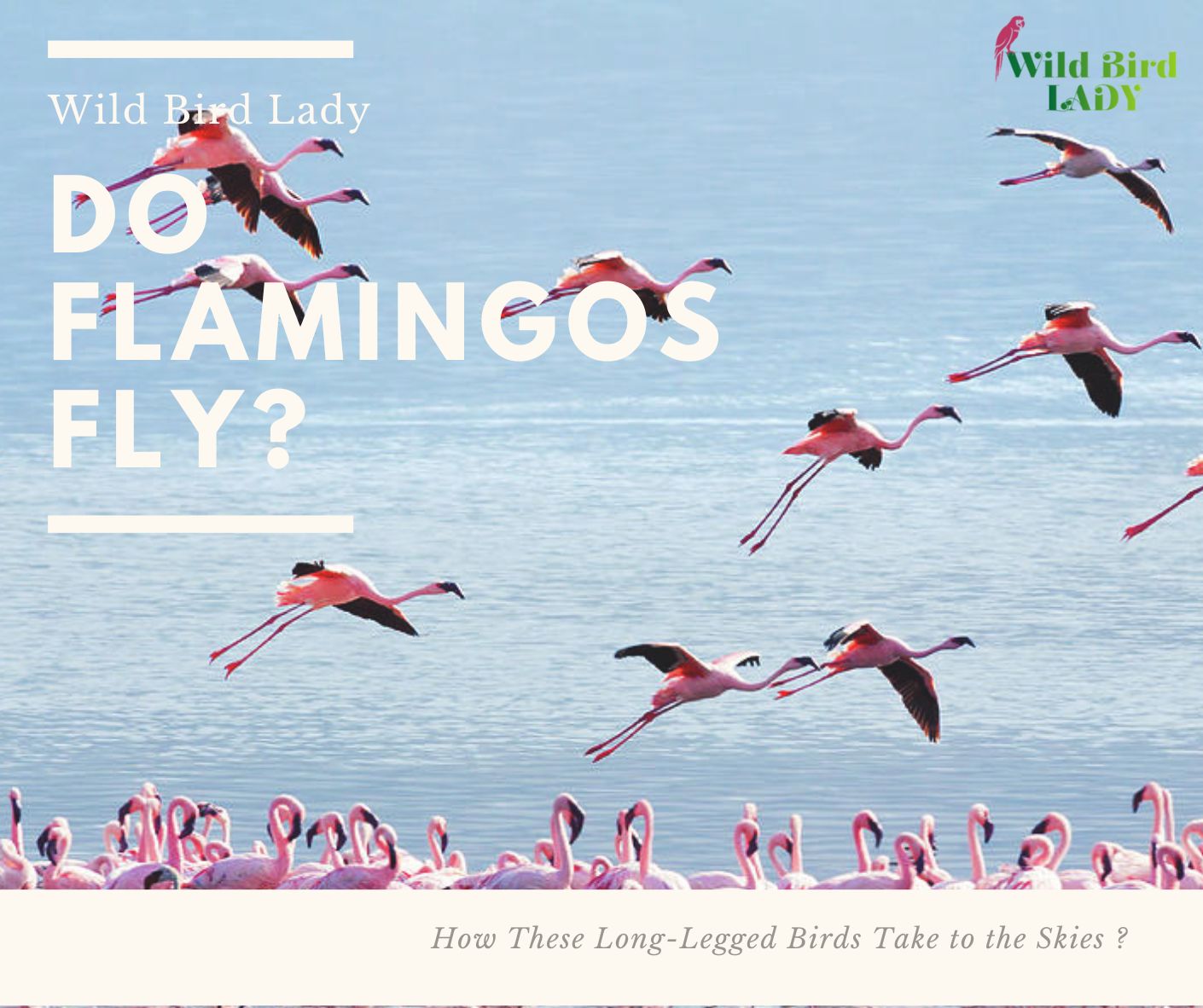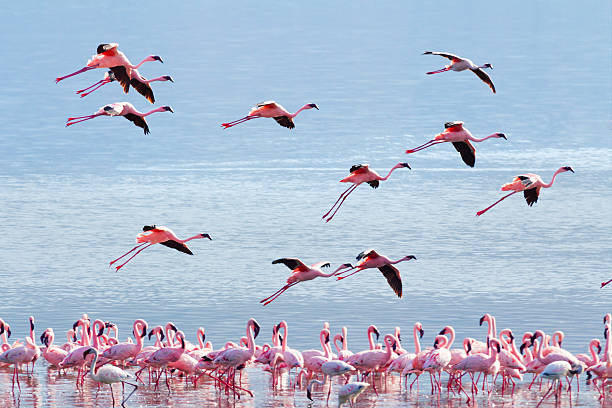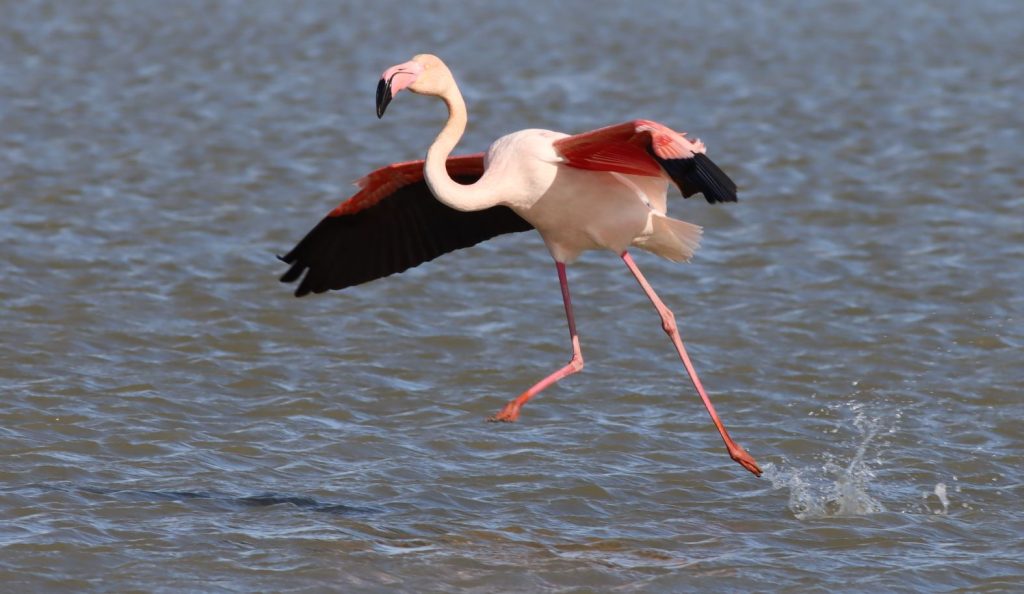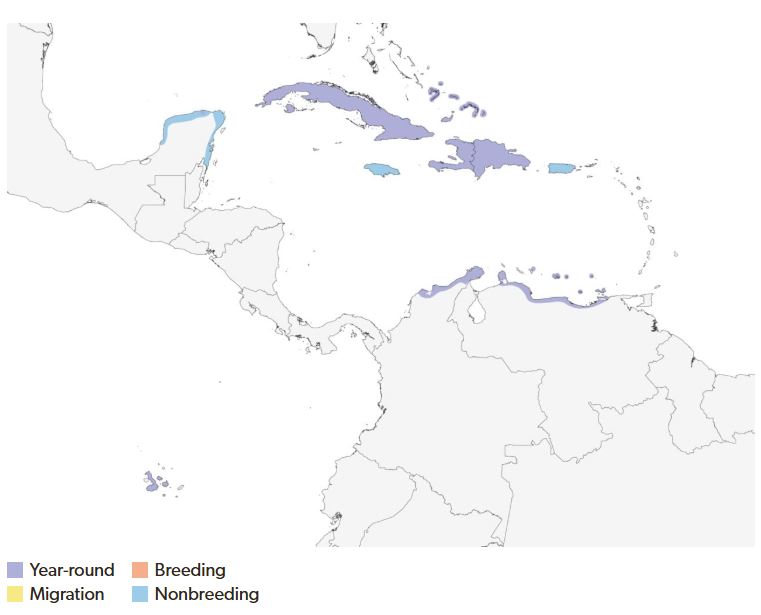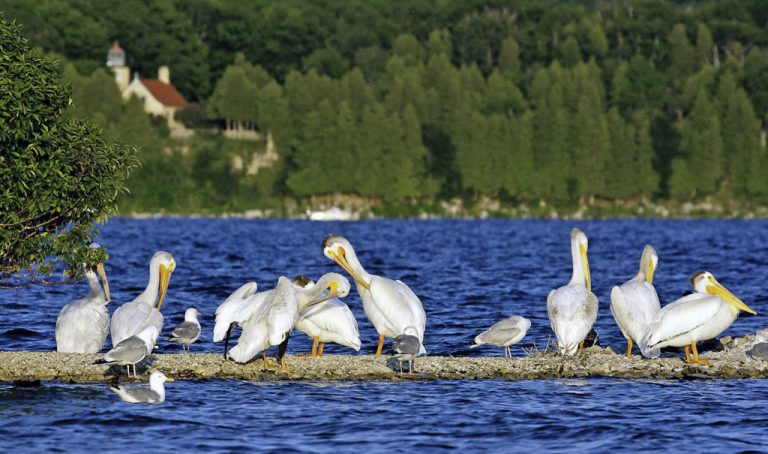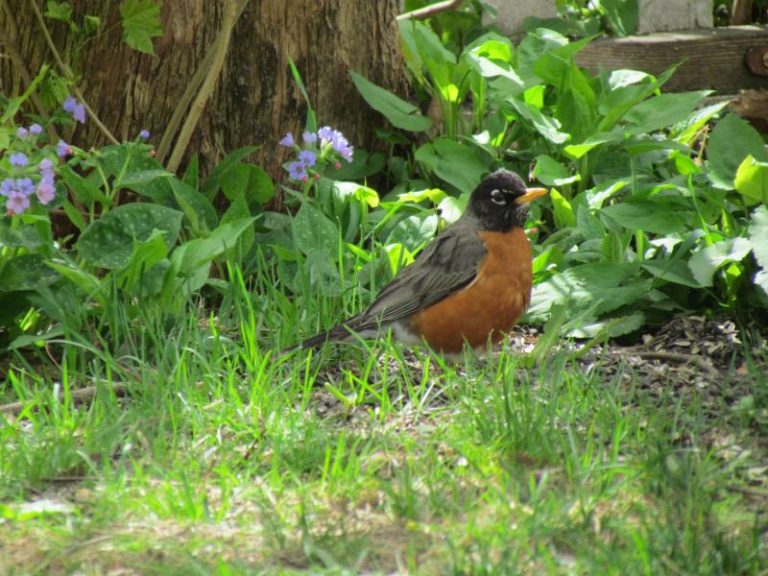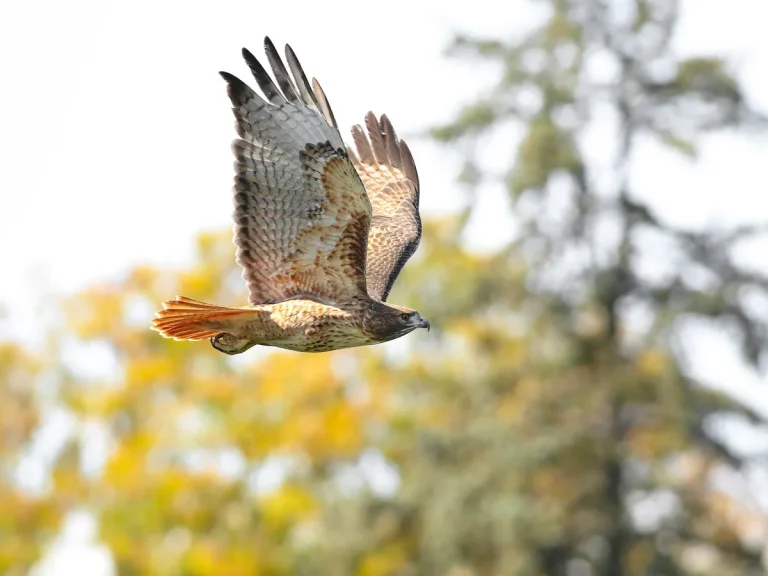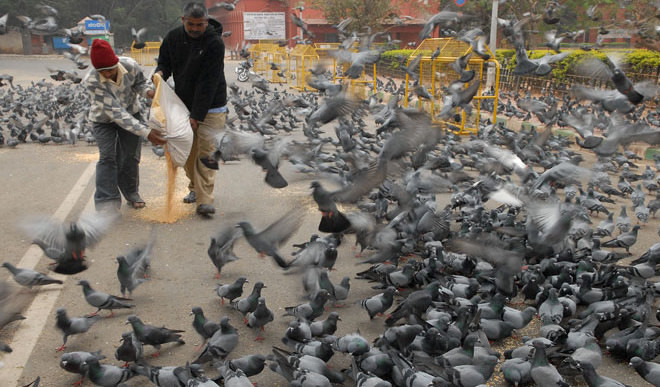Do Flamingos Fly? The Truth About Their Graceful Yet Surprising Flight Habits
When you think of flamingos, your mind likely drifts to pink feathers, shallow lagoons, and that signature one-legged stance. But here’s a question that often surprises even bird enthusiasts: do flamingos fly? The answer is a resounding yes—and not only do they fly, but their flight is one of the most elegant and unexpected spectacles in the bird world.
In this article, we’ll explore the world of flamingo flight—from how they take off to where they go and why we rarely see them in the air. Whether you’re a casual bird lover or a seasoned ornithologist, this deep dive into flying flamingos will expand your understanding and appreciation of these flamboyant fliers.
Do Flamingos Fly? (Short Answer)
Yes, flamingos do fly—and they’re surprisingly skilled at it. While you may mostly see them wading gracefully in shallow waters, these birds are fully capable of flying long distances, often at impressive speeds and altitudes.
Their flight is typically long-range and nocturnal, allowing them to move between breeding, feeding, and roosting grounds. In fact, flamingos can travel hundreds of miles in a single trip when conditions require it.
The Flamingo Flight Style: Graceful Yet Powerful
A flying flamingo is a sight to behold. With long necks outstretched and legs trailing behind, they glide through the air with a unique elegance. Unlike smaller birds that flap rapidly, flamingos use steady, powerful wingbeats to propel themselves across long distances.
Their wings are larger than you might expect, with black primary feathers that are only visible in flight. This striking contrast between pink and black adds to the drama of seeing them airborne.
How Flamingos Take Off and Land
Flamingos can’t just leap into the sky like some birds. Instead, they require a running start across water, similar to how swans take flight.
Takeoff:
- They begin by flapping their wings vigorously.
- Simultaneously, they run across the water’s surface.
- After gaining enough speed, they become airborne.
Landing:
- To land, they glide toward the water, reducing their speed.
- Their long legs act like landing gear, touching the surface before the rest of their body.
- A few final steps and wing flaps help them settle gracefully.
This entire process requires space—another reason flamingos prefer open lakes and lagoons with plenty of room to maneuver.
When and Why Flamingos Fly
Unlike smaller birds that dart around the sky each day, flamingos are not habitual fliers. These elegant waders spend most of their time standing, feeding, or socializing in shallow waters. So when do flamingos actually take to the air—and why?
Let’s dive into the key reasons that trigger flamingo flight, and when you’re most likely to witness one of these rare airborne journeys.
1. Searching for New Feeding Grounds
One of the most common reasons flamingos fly is environmental change. Their primary food sources—tiny algae, plankton, diatoms, and small invertebrates—thrive in shallow, salty or alkaline lakes. However, these fragile ecosystems can be highly unstable.
- Droughts or seasonal evaporation can cause lakes to dry up.
- Flooding can dilute salinity, reducing food concentration.
- Human activities like mining or damming can disrupt water levels.
When food becomes scarce, flamingos must move to survive. They’ll take off in search of new wetlands—sometimes flying hundreds of miles overnight to reach better feeding sites.
2. Escaping Predators or Disturbance
Though flamingos are large and social, they’re still vulnerable to threats, especially during nesting. If disturbed by:
- Predators (like jackals, hyenas, or raptors)
- Loud human activity (drones, vehicles, boats)
- Sudden environmental changes (storms, water pollution)
They may abandon the area entirely and fly to a safer location.
This is particularly important in breeding colonies, where thousands of flamingos may take off at once in a synchronized mass flight, creating a breathtaking and chaotic spectacle of pink wings.
3. Seasonal and Opportunistic Migration
Not all flamingo species migrate regularly, but several do engage in seasonal or opportunistic migration depending on environmental conditions. Two of the most migratory are:
- Greater Flamingo (Phoenicopterus roseus)
Found across Africa, southern Europe, and parts of Asia, this species is known to migrate between salt flats, estuaries, and inland lakes. - Lesser Flamingo (Phoeniconaias minor)
Native to East Africa and parts of India, they follow rainfall patterns to find ephemeral lakes rich in food.
In years of poor rainfall or resource scarcity, even relatively sedentary flamingo populations may relocate en masse—traveling across deserts, savannas, and even mountain ranges to reach suitable wetlands.
Some flamingos have been recorded flying over 500 miles (800 km) in a single journey, especially when traversing regions like the Sahara Desert or the Andes Mountains.
4. Travel Between Roosting and Nesting Sites
Even outside of migration, flamingos often make shorter daily flights between key activity zones:
- Roosting Sites: Typically shallow water or sandbars where flamingos sleep, often in groups.
- Feeding Areas: Shallow lagoons or mudflats rich in blue-green algae and brine shrimp.
- Nesting Colonies: Mud mounds on alkaline lakes used for laying and incubating eggs.
These daily flights can range from a few hundred yards to several miles, depending on the layout of the habitat. In areas with seasonal wetlands, this commuting behavior becomes more frequent and pronounced.
5. Why Flamingos Prefer Flying at Night
One of the most fascinating aspects of flamingo flight behavior is their preference for nighttime travel. Most long-distance flights occur after dusk and continue through the early morning hours.
Here’s why:
- Cooler temperatures reduce the risk of overheating, especially since flamingos have dense feathering and large wings.
- Star navigation may help them orient during long migrations, like other night-flying birds.
- Avoidance of predators: Day-flying raptors like eagles, falcons, and hawks pose less threat at night.
- Reduced wind turbulence, making flight more energy efficient.
Night flights also allow flamingos to arrive at new feeding grounds early in the morning—when competition is low, and the sun hasn’t yet begun evaporating shallow water sources.
Summary Table: Triggers for Flamingo Flight
| Reason for Flight | Description | Time of Day |
|---|---|---|
| Food scarcity | When lakes dry up or food becomes limited | Night |
| Predator escape | Fleeing sudden threats or disturbances | Day or Night |
| Seasonal migration | Long-distance movement to better habitats | Mostly Night |
| Daily commuting | Between roosting, nesting, and feeding sites | Early Morning & Dusk |
Flamingo flight is not random—it’s a response to necessity. Whether driven by the need to find food, safety, or better breeding grounds, these majestic birds take to the air with both purpose and elegance.
How Far Can Flamingos Fly?
A flamingo flight can cover more distance than you might expect. In fact, some recorded flights exceed 300 to 400 miles (480 to 640 kilometers) in a single journey!
For Example:
- Greater Flamingos in Africa have been known to migrate between countries like Ethiopia and Tanzania.
- In South America, Chilean Flamingos travel across the Andes Mountains to find warmer wetlands during winter.
Their bodies are built for endurance flight, much like cranes or storks, making them excellent long-distance travelers.
Why You Rarely See a Flying Flamingo
You’ve probably seen dozens of flamingos standing elegantly in water—or even balancing on one leg—but spotting a flying flamingo in the wild? That’s a rare and unforgettable sight.
Despite being capable of flying long distances, flamingos are surprisingly elusive in the skies. If you’ve ever asked yourself, “If flamingos fly, why don’t we see it more often?” — you’re not alone.
Let’s explore the key reasons behind this mystery.
1. They Mostly Fly at Night
Perhaps the biggest reason we don’t often witness flamingo flight is that it usually happens after the sun goes down. Flamingos are primarily nocturnal fliers, especially during long migrations or when traveling between feeding and roosting grounds.
Why nighttime?
- Cooler air reduces the risk of overheating—especially critical for a large-bodied bird with dense feathers and long flights ahead.
- Lower turbulence during the night makes flight smoother and more energy-efficient.
- Fewer predators are active, reducing the threat from raptors or scavengers.
- Celestial navigation: Like many migratory birds, flamingos are thought to use the moon, stars, and magnetic fields to find their way.
Unless you’re monitoring a known flamingo flyway during the early hours of dawn, you’re unlikely to catch them mid-flight.
2. Remote and Inaccessible Habitats
Another major reason flamingo flights go unnoticed is location. Flamingos tend to inhabit:
- Alkaline or saline lakes
- Isolated salt flats
- Wetlands in deserts or high-altitude plateaus
- Remote coastal lagoons
These areas are often far from human development and difficult to reach. For example, the Lesser Flamingo breeds at East Africa’s Lake Natron, a caustic, steaming salt lake inhospitable to most animals—and people.
Even in areas where flamingos are visible by day, they may fly off to more secluded locations at night, often bypassing human settlements entirely.
3. They Fly at High Altitudes
When on long-distance journeys, flamingos can cruise at altitudes of over 10,000 feet (3,000 meters). This high elevation not only helps them avoid turbulence and predators, but also places them far out of visual range for ground observers.
Because they often fly against dark skies—especially during dusk or nightfall—their pale pink or white plumage blends in, making them even harder to detect.
4. Captive Flamingos Can’t Fly (By Design)
Many people first encounter flamingos in zoos or bird parks, where these birds appear entirely flightless. That’s no accident.
In captivity, flamingos typically undergo wing clipping, a common practice to prevent escape. This involves trimming the primary flight feathers on one wing to create asymmetry, making true flight impossible.
Even in open-air exhibits, flamingos may have enough space to walk or wade, but not enough for a full running takeoff, which they need to gain lift. As a result, most visitors grow up thinking flamingos simply don’t fly.
5. They Conserve Energy When Not Required to Fly
Flight is an energy-intensive activity, especially for a large bird like a flamingo. Unlike swallows or hawks, flamingos don’t fly daily just for movement or exercise.
They tend to fly only when necessary:
- Finding food or fresh water
- Escaping disturbance
- Seasonal migration
- Traveling between roosting and nesting sites
When conditions are stable—abundant food, calm waters, low disturbance—flamingos stay grounded for days or weeks on end.
6. Flight Occurs at Specific Times of Year
Not all flamingos migrate, and even migratory species don’t fly long distances year-round. Many flamingo flights are tied to:
- Breeding seasons
- Rainfall cycles (which replenish ephemeral lakes)
- Changes in salinity or water depth
This means flamingos may remain in the same area for months, with no visible flights—then suddenly take off en masse when conditions shift.
If you’re not in the right place at the right time, you’ll miss it entirely.
Night Flights and Migration Patterns
To fully understand why flamingo flights are so rarely observed, it helps to examine their migration behaviors, which are equally fascinating—and elusive.
Nocturnal Navigation
Most flamingo species fly during the night, especially over long distances. Researchers believe this behavior has evolved for several key reasons:
- Temperature regulation: Cooler air at night helps prevent overheating, especially important for birds with minimal sweat regulation.
- Avoiding visual predators: Daytime birds of prey like eagles, falcons, and hawks are less active at night.
- Calmer skies: Wind patterns tend to settle during nighttime, reducing energy expenditure.
- Star guidance: Like other nocturnal migrants, flamingos likely use the stars, moon, and even the Earth’s magnetic field to stay on course.
Some observers in Africa and South America have reported large V-shaped formations of flying flamingos silhouetted against the moonlight—an awe-inspiring but fleeting sight.
Migratory Routes and Behavior
Migration patterns vary across species and regions:
Lesser Flamingo (Phoeniconaias minor)
- Found mainly in East and Southern Africa.
- Travels between soda lakes in Kenya, Tanzania, Botswana, and Namibia.
- Highly dependent on rainfall cycles and algae blooms.
Greater Flamingo (Phoenicopterus roseus)
- Found across Africa, southern Europe, and South Asia.
- Migrates between salt flats, coastal estuaries, and inland wetlands.
- Recorded flights include Spain to Turkey and India to Pakistan.
These migratory flights can cover hundreds of miles and may occur high above the clouds, in complete silence.
Flamingo Flight Formations
When flying in groups, flamingos often adopt V-shaped or single-line formations, similar to geese. This strategy offers:
- Aerodynamic efficiency (they reduce air resistance).
- Easier navigation for birds in the back of the formation.
- Social coordination, as flamingos are highly communal birds.
These formations also create stunning visuals for anyone lucky enough to catch them during a flying flamingo migration.
Flamingo Anatomy: Built for Flight?
At first glance, flamingos don’t look like strong fliers. But their body is surprisingly well-adapted for flight:
| Feature | Function in Flight |
|---|---|
| Large wingspan | Provides lift and balance |
| Hollow bones | Reduces body weight |
| Strong pectoral muscles | Enables sustained flapping |
| Long neck and legs | Aerodynamic balance during flight |
Even their curved bill tucks neatly during flight to reduce wind resistance.
Flamingos in Captivity: Do They Still Fly?
In zoos or bird parks, flamingos rarely fly. This is mainly because:
- Their wings are clipped to prevent escape.
- Enclosures are small, without enough space for takeoff.
- Flying isn’t necessary, as food and shelter are provided.
However, in wildlife reserves or sanctuaries, flamingos may still retain the ability—and instinct—to fly, especially if they are free-roaming.
Fascinating Facts About Flying Flamingos
Here are a few jaw-dropping facts you might not know:
- A flying flamingo can reach speeds of up to 35 miles per hour (56 km/h).
- They sleep standing, but can fly for hours without rest.
- Their black flight feathers are completely hidden when they’re standing or walking.
- Flamingos often vocalize mid-flight, using honks or low grunts to stay coordinated.
Final Thoughts: The Hidden Magic of Flamingo Flight
So, do flamingos fly? Not only do they fly—they do it beautifully, powerfully, and often out of sight. From long-range migration to nighttime takeoffs over moonlit wetlands, flamingo flight is one of nature’s best-kept secrets.
The next time you watch a group of flamingos feeding quietly in the shallows, remember that those same birds could lift off that night and fly across a continent before dawn. Their elegance isn’t just for show—it’s aerodynamic, adaptive, and built for journeys few of us ever see.
FAQ: All About Flamingo Flight
Do flamingos actually fly?
Yes, flamingos can fly—and they’re strong fliers! In the wild, they often fly long distances between feeding and breeding grounds, especially during migration. Though they may seem grounded in zoos, wild flamingos regularly take flight, especially at night or when disturbed.
Why don’t we often see flamingos flying?
You rarely see flamingos fly because they usually fly at night, at high altitudes, and in remote areas. Their habitats are often far from cities, and in captivity, flamingos have clipped wings that prevent them from flying altogether.
How far can flamingos fly?
Flamingos can fly over 300 to 400 miles (480 to 640 km) in a single night when migrating. Some have been recorded flying even farther depending on food availability, water conditions, or seasonal changes.
Do flamingos migrate?
Yes, some flamingo species migrate seasonally. For example, Greater Flamingos in Europe and Asia migrate between salt lakes and coastal wetlands, while Lesser Flamingos in Africa move based on rainfall and food supply. However, not all populations migrate.
At what speed and altitude do flamingos fly?
Flamingos can fly at speeds of around 30 to 40 miles per hour (50–65 km/h) and at altitudes up to 15,000 feet (4,500 meters). These high, fast flights help them cross deserts, mountain ranges, and long stretches of land or water.
Do flamingos fly in groups or alone?
Flamingos typically fly in large flocks, often in V-formations, to conserve energy during long flights. These group flights are especially common during migrations or when relocating due to changes in habitat.
Can flamingos fly from a standing position?
Flamingos need a running start across the water to take off. They flap their wings rapidly while sprinting on the surface until they generate enough lift for flight—similar to how swans or geese take off.
Why don’t flamingos in zoos fly?
Most flamingos in zoos or bird parks have their wings clipped to prevent escape. Clipping trims the primary flight feathers, making it impossible for the bird to gain lift. As a result, they appear flightless, but wild flamingos have full flight ability.
Read Also: Baby Flamingo Facts: What They Really Look Like (You’ll Be Surprised!)

